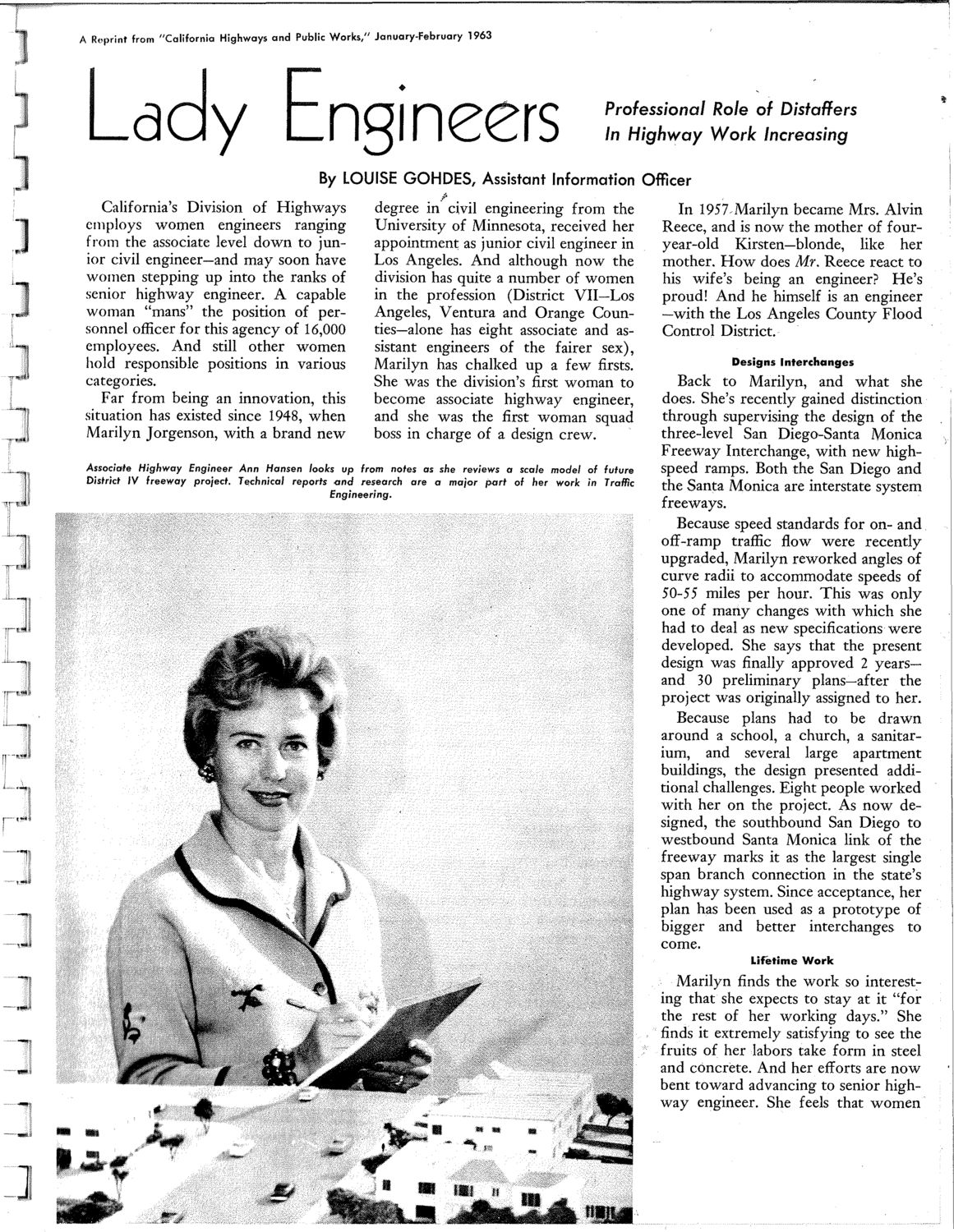Caption: SWE - News Clippings Book
This is a reduced-resolution page image for fast online browsing.

EXTRACTED TEXT FROM PAGE:
A Reprint from "California Highways and Public Works," January-February 1963 ddy engineers California's Division of Highways employs women engineers ranging from the associate level down to junior civil engineer—and may soon have women stepping up into the ranks of senior highway engineer. A capable woman "mans" the position of personnel officer for this agency of 16,000 employees. And still other women hold responsible positions in various categories. Far from being an innovation, this situation has existed since 1948, when Marilyn Jorgenson, with a brand new Professional In Highway Role of Work Distaffers Increasing By LOUISE GOHDES, Assistant Information Officer degree in civil engineering from the University of Minnesota, received her appointment as junior civil engineer in Los Angeles. And although now the division has quite a number of women in the profession (District VII—Los Angeles, Ventura and Orange Counties—alone has eight associate and assistant engineers of the fairer sex), Marilyn has chalked up a few firsts. She was the division's first woman to become associate highway engineer, and she was the first woman squad boss in charge of a design crew. In 1957 Marilyn became Mrs. Alvin Reece, and is now the mother of fouryear-old Kirsten—blonde, like her mother. H o w does Mr. Reece react to his wife's being an engineer? He's proud! And he himself is an engineer —with the Los Angeles County Flood Control District. Designs Interchanges Associate Highway Engineer Ann Hansen looks up from nofes as she reviews a scale model of future District IV freeway project. Technical reports and research are a major part of her work in Traffic Engineering. Back to Marilyn, and what she does. She's recently gained distinction through supervising the design of the three-level San Diego-Santa Monica Freeway Interchange, with new highspeed ramps. Both the San Diego and the Santa Monica are interstate system freeways. Because speed standards for on- and off-ramp traffic flow were recently upgraded, Marilyn reworked angles of curve radii to accommodate speeds of 50-55 miles per hour. This was only one of many changes with which she had to deal as new specifications were developed. She says that the present design was finally approved 2 years— and 30 preliminary plans—after the project was originally assigned to her. Because plans had to be drawn around a school, a church, a sanitarium, and several large apartment buildings, the design presented additional challenges. Eight people worked with her on the project. As now designed, the southbound San Diego to westbound Santa Monica link of the freeway marks it as the largest single span branch connection in the state's highway system. Since acceptance, her plan has been used as a prototype of bigger and better interchanges to come. Lifetime W o r k Marilyn finds the work so interesting that she expects to stay at it "for the rest of her working days." She finds it extremely satisfying to see the fruits of her labors take form in steel and concrete. And her efforts are now bent toward advancing to senior highway engineer. She feels that women
|